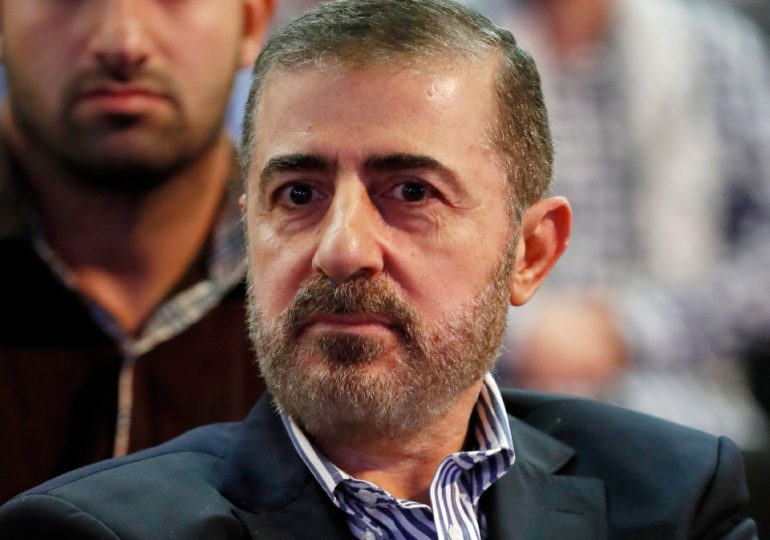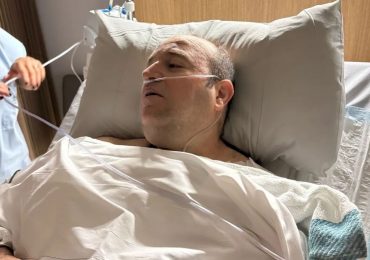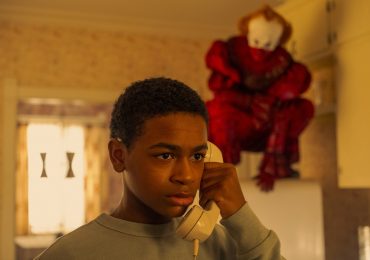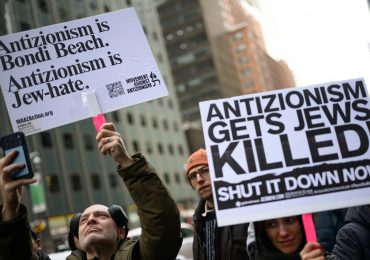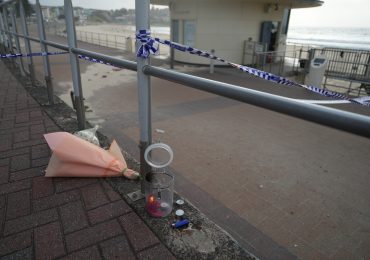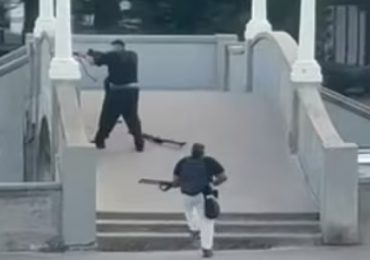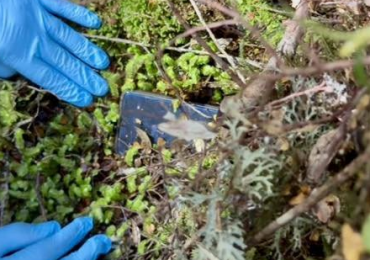ISRAEL launched its deadliest air raids of the war – but it could have missed a terror chief it was hunting.
Huge blasts struck two separate Beirut blocks in neighbourhoods in the Lebanese capital previously untouched by the bloody year-long conflict.
APTop Hezbollah security official, Wafiq Safa, pictured in 2017[/caption]
APFlames and smoke rise at the scene of destroyed buildings hit by an Israeli airstrike in central Beirut[/caption]
ReutersPeople walk at the site of an Israeli air strike in Beirut on Friday[/caption]
ReutersHomes were reduced to rubble following the deadly blitz[/caption]
GettyAn emergency worker walks across rubble at the site of the airstrike that killed at least 22[/caption]
At least 22 people were confirmed dead and dozens injured as rescue teams continued to scour mountains of rubble on Friday.
But Wafiq Safa – Hezbollah’s slippery Liaison and Coordination Unit chief – could have eluded one of the attacks focused on a third-floor city centre apartment.
The strike came as troops continued to raid villages in southern Lebanon and as Hezbollah launched dozens of rockets across the border into Israeli cities and towns.
It can mark a rare failure for Israel Defence Forces and its Mossad and Shin Bet intelligence agents after a stunning run of assassinations of scores of terror group commanders.
Safa’s whereabouts and conditions remain a mystery as outlets including Sky Arabia report he could have also been critically injured.
The latest attempted hit came amid reports that Iran’s top military commander was suspected of being a traitor feeding information to Israel.
Brigadier General Esmail Qaani was understood to be under house arrest and interrogation by investigators from Iran’s Islamic Revolutionary Guard Corps.
They are asking why he dodged Beirut blitzed bunker meetings with Hezbollah chief Hassan Nasrallah and the group’s likely successor Hashem Safieddine.
Qaani – who has vanished from public view – was further rumoured to have had a heart attack while being grilled over his alleged treachery.
GettyLebanese civil defense and emergency teams conduct a search and rescue operation following the strike[/caption]
ReutersA damaged building stands at the site of the airstrike[/caption]
Israel last night launched a major airstrike in Beirut targeting a senior Hezbollah figure, which killed at least 22 and wounded hundreds.
The terrifying air raid on the capital is one of the deadliest so far as tensions in the region spiralled in recent weeks.
The chilling airstrike hit two residential buildings in separate neighbourhoods simultaneously – tearing down one eight-story building and wiping out the lower floors of the other, according to AP.
Loud explosions billowed from the city as rescuers were spotted digging through rubble at the scene.
Reports have suggested that the apparent target was one of Hezbollah’s high-ranking security officials Wafiq Safa – who is also Hassan Nasrallah’s brother-in-law.
Hezbollah’s Al Manar TV claimed that the apparent attempt to kill Safa had failed – adding that he hadn’t been inside of either of the targeted buildings.
The Israeli military said it is looking into the reported strikes.
Israeli airstrikes on Hezbollah targets have become more common in Beirut’s southern suburbs since the deadly war began.
But the city had seen two relatively quiet days following intensive strikes in recent weeks.
Tensions between Iran and Israel have become palpable with Israel carrying out waves of heavy strikes across Lebanon and launching a ground invasion.
Could missing Iranian general suspected of being Israeli double agent be reason behind the potentially failed blitz?
By Nick Parker, Foreign Editor
IRAN’S top military chief reportedly suffered a heart attack during a brutal interrogation over claims he was behind Israel’s terror cull.
According to unconfirmed reports, Brigadier General Esmail Qaan, 67, was transferred to a hospital after a grilling by Iran’s Islamic Revolutionary Guard Corps.
Rumours of espionage began to swirl after the death of Hezbollah leader Hassan Nasrallah in Israel’s October 4 strike on a bunker in Beirut.
His disappearance sparked claims that he is the traitor behind Israel’s incredible cull of Hezbollah’s top brass.
Qaani has not been heard of – even by his family – since the blitz on Hezbollah top brass.
He was believed to have died alongside Hezbollah heir apparent Hashem Saffeieddine, 60, in the bunker blast.
But sources in Lebanon, Iraq and Iran have since revealed Qaani was not at the meeting.
And he dodged another strike a week earlier in which Hezbollah leader Nasrallah was blitzed.
His vanishing act sparked consternation across Iran’s panicked military as rumours spread that he had turned on the evil Islamist regime.
Qaani leads Iran‘s powerful Revolutionary Guard’s elite Quds Force and has been confirmed to be “alive and in good health” by the regime.
He is also being probed over the September 27 bunker buster assassination of Nasrallah, 64.
Nasrallah’s death sparked a desperate hunt for Israel’s mole by the Guard Corps – whose investigators are now said to suspect their own leader.
Multiple sources said that Qaani and his team were under lockdown as interrogators demand answers.
Qaani became head of the Quds Force – the IRGC’s overseas unit – after the US killing of its previous leader, Qassem Soleimani, in January 2020.
Israel has succeeded in wiping out dozens of enemy commanders across the region with intelligence led assassinations and its incredible pager and walkie-talkie bomb blitz.
They included Safieddine, who is believed to have been killed at a meeting of Hezbollah’s Shura Council in Beirut which Qanni was due to attend.
Qaani was, at first, thought to have been killed or wounded but has since emerged that he pulled out of the meeting.
On Tuesday, Iraj Masjedi, deputy commander of the Quds Force and former Iranian ambassador to Baghdad said Qaani was “in good health and is carrying out his daily duties”.
The commander of an armed faction close to Iran said: “The Iranians have serious suspicions that the Israelis have infiltrated the Islamic Revolutionary Guard Corps, especially those working in the Lebanese arena, so everyone is currently under investigation.
“Nothing is certain at the moment. The investigations are still ongoing and all possibilities are open.”
Iran’s probe into Nasrallah’s death have also focused on the final movements of Quds force commander Brigadier General Abbas Nilforoushan, who died alongside the terror chief.
Nilforoushan had only just taken over from Brigadier General Mohammad Reza Zahedi, who was killed in another Israeli strike on an Iranian consulate in Syrai in April.
Sources said Nasrallah had been outside Beirut’s southern suburbs the night before his killing, but returned to the area to meet with Nilforoushan in a secret operations room.
Nilforoushan, who had flown from Beirut from Tehran earlier, was taken directly from the plane to the bunker beneath in the Haret Hreik suburb.
And Nasrallah was killed by six enormous bunker-buster bombs as soon as he set foot in the meeting to join Qaani’s comrade.
Another source said: “The breach was 100 percent Iranian and there is no question about this part.”
Qaani was in Lebanon a week later and had been expected to attend the Shura Council meeting at Safieddine’s invitation on the day of the air strike.
But he was reported to have Qaani apologised and backed out shortly before Israel struck again.
A Hezbollah source told Middle East Eye: “Israel targeted the venue of this meeting with a raid that was bigger and harsher than the raid that targeted Nasrallah.
“Safieddine’s head was what was wanted, and no one else.
“Qaani was invited to this meeting and under the current circumstances he should have been present.”

